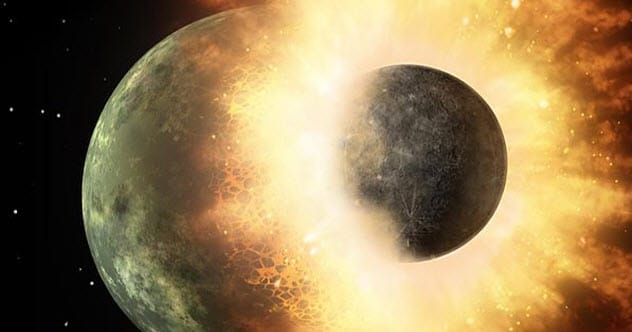Astronomy is a vast and fascinating field. The more we explore the universe, the more we realize how much there is still to discover. Each new finding often raises more questions than it answers. From the strange dunes of Pluto to Jupiter’s glowing moon, our solar system holds many elusive and mind-boggling phenomena. Let’s explore some of the most astonishing secrets our solar system is still trying to unravel.
10. Strange Things Dwell in the Clouds of Venus
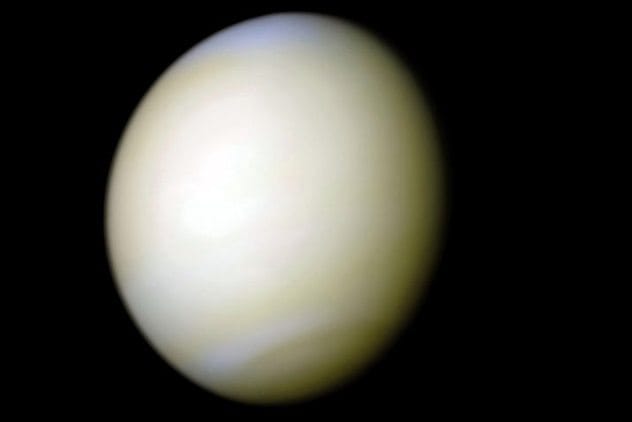
The atmosphere of Venus is full of mysteries. Scientists believe that studying the clouds of Venus can teach us a lot. It is thought that Venus was once very similar to Earth, with lakes and oceans covering its surface. However, toxic gases and extreme warming transformed Venus into the dry, harsh planet we see today.
Could there have been life on Venus in the past? If so, could that life have survived by moving into the clouds? About 30 miles (50 kilometers) above the surface, the temperature and pressure are similar to those on Earth.
Peter Beck plans to send a robot to Venus in 2023 to search for signs of extraterrestrial life in the clouds. Rocket Lab hopes to find living organisms floating above the barren surface.
“We’re going to learn a lot on the way there, and we’re going to have a crack at seeing if we can discover what’s in that atmospheric zone,” Beck explained. “And who knows? You may hit the jackpot.”
9. Space Hurricane Looms Over Earth
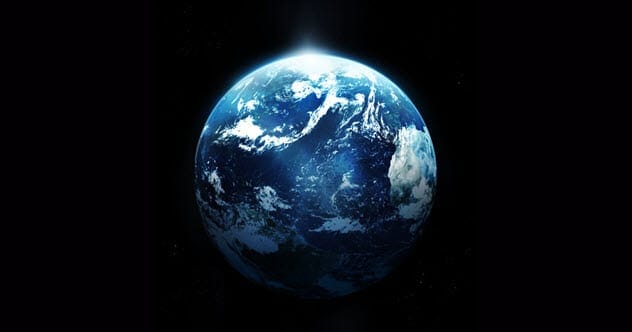
In 2014, scientists observed a strange vortex swirling above the North Pole. This unusual spiral of auroral light was over 600 miles wide and lit up the sky for eight hours. Until recently, researchers struggled to understand what this giant patch of light was and why it appeared.
Physicists at Shandong University in China have now shed light on this phenomenon. Using satellite data from the Cold War era, Qing-He Zhang explained that the ‘space hurricane’ was a large spiral of electrically charged gas. These celestial whirlpools are caused by showers of electrons from the sun. The particles travel through Earth’s magnetic field, colliding with gas atoms in the upper atmosphere and creating bright flashes of light. Zhang and his team believe that space hurricanes may have occurred before 2014, but this was the first confirmed observation.
8. Methane Points to Life on Mars
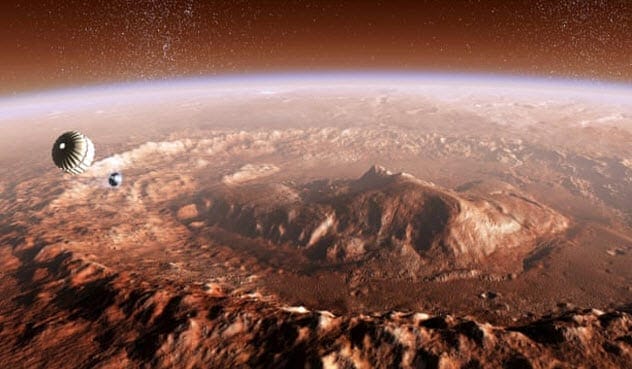
Is there life on Mars? The presence of methane gas has led some scientists to believe that life may exist on the Red Planet. On Earth, living organisms are the primary source of methane. Therefore, it is possible that the same could be true on other planets. Each time scientists find new evidence of methane on Mars, they get closer to determining if life exists there.
In 2019, NASA’s Curiosity rover detected a surge of methane gas in Mars’ atmosphere within the Gale Crater. While this discovery suggests the possibility of extraterrestrial life, it is not definitive proof. Methane can also be produced by geological processes, such as reactions between certain rock minerals and water. More evidence is needed to identify the source of the gas.
7. Ice Dunes Spotted on Pluto
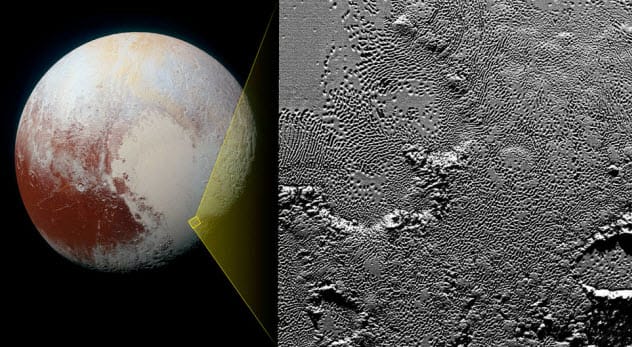
The surface of Pluto is a strange and mysterious place. Scientists once thought that the dwarf planet was barren and lifeless. However, recent images from NASA’s New Horizons mission have revealed that Pluto is full of fascinating geographical features.
Dunes of frozen methane ripple across the Sputnik Planitia plains, alongside mountains of water ice that reach about 3 miles (5 kilometers) high. These dunes are formed from tiny methane crystals, about the size of sand grains, that are blown by glacial winds from the nearby mountains. The dunes also contain frosted nitrogen crystals.
Pluto joins a growing list of celestial bodies, including Venus, Titan, and comet 67P, where dunes have been observed.
6. Mysterious Hum Detected on Mars
When NASA sent its InSight lander to Mars in 2018, no one expected it to find the planet humming. The spacecraft detected a continuous hum, punctuated by quakes and tremors, and the cause remains unknown.
InSight is equipped with a high-precision seismometer and various detectors. Data from InSight has revealed a great deal about the planet’s structure and magnetic field. Since landing, the lander has recorded over 450 cases of seismic activity, or ‘marsquakes.’ Unlike Earth, Mars does not have tectonic plates, so scientists are still trying to understand how these quakes occur.
The most surprising discovery is the mysterious Martian hum. This seismic signal buzzes at 2.4 Hz and seems to get louder during marsquakes. Researchers have ruled out wind as the source, but the origin of the hum is still a mystery.
5. Methane Rain on Saturn’s Largest Moon
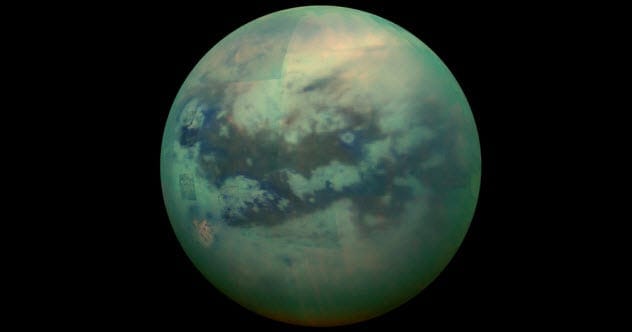
Titan, Saturn’s largest moon, has several unusual weather patterns. It is the only known body in the solar system, other than Earth, where liquid rain falls on a solid surface. However, unlike Earth, rainfall on Titan is rare. Some areas of Titan only receive rainfall about once every thousand years, and instead of water, it rains methane.
While it might not rain often on Titan, when it does, it pours. Meters of rainfall can fall in a single shower, carving deep river channels into the moon’s surface. Astronomers have also discovered vast lakes and seas of liquid methane.
One of the mysteries puzzling scientists is the lack of cloud cover around the North Pole. During a study of sunbeams on the moon, scientists recently observed rainfall during Titan’s summer for the first time. However, they were unsure why they had not seen any clouds. Solving this mystery could improve our understanding of weather patterns in general, but for now, it remains unknown.
4. Europa, Jupiter’s Icy Moon, Might Glow in the Dark
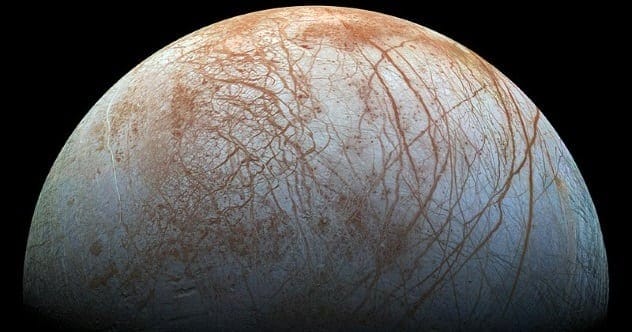
New research suggests that one of Jupiter’s moons, Europa, might glow in the dark. Scientists believe that Europa could emit a greenish glow caused by the intense radiation from Jupiter’s magnetic field.
Europa is known for its thick layer of ice. The moon is constantly bombarded by electrons. When these charged particles hit Europa’s icy surface, they transfer energy to the ice molecules. The energized molecules then release this energy as light, which could give the moon an eerie shimmer.
3. Strange Mass Hiding Under the Surface of the Moon
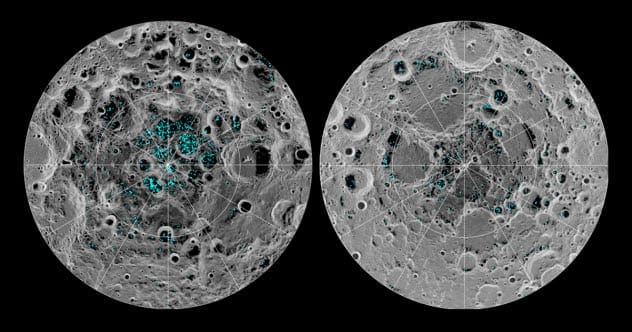
Beneath the largest crater in the solar system lies a giant mass of metal, and no one knows what it is doing there. This mysterious mass, thought to be about five times the size of the Island of Hawai’i, is located under the South Pole-Aitken basin on the far side of the moon.
The crater is roughly oval-shaped and spans over 1,200 miles wide. Astronomers believe it formed four billion years ago. The mass itself is located hundreds of miles underground. Scientists discovered the metal anomaly while studying the moon’s surface and gravitational field.
Scientists are eager to learn the origins of this puzzling underground lump. One theory suggests it could be from the asteroid that created the crater. Meteorite cores are often made of iron-nickel alloy, and computer simulations suggest that this metallic core could have embedded itself in the moon’s mantle. Another theory is that the mass is related to cooling and solidifying oceans of liquid magma.
2. The Mystery of Rust on the Moon
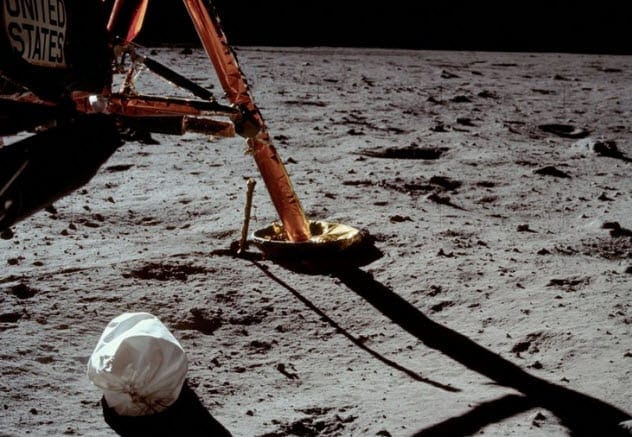
Iron rusts when exposed to oxygen and water. So, it was surprising when astronomers discovered rust on the moon. Using data from India’s Chandrayaan-1 mission, researcher Shuai Li found clear signs of iron oxide, or rust, on the lunar surface.
Initially, Li’s findings puzzled scientists. How could rust form in a place without oxygen? Additionally, the moon is constantly bombarded by hydrogen atoms from solar winds, which should prevent iron from oxidizing. Rust on the moon seemed impossible, yet the evidence was undeniable.
The solution lies in the Earth’s magnetic field. Solar winds distort the Earth’s magnetic field, causing the part furthest from the sun to stretch backward, forming a magnetotail that extends 240,000 miles (385,000 kilometers) into space.
During its orbit, the moon briefly passes through this magnetotail. At this point, the Earth shields the moon from the usual hydrogen bombardment, and the magnetic field deposits small amounts of oxygen on the moon’s surface. For a brief moment, the conditions are right for rust to form.
1. ʻOumuamua, the Solar System’s First Known Visitor
In 2017, a giant cigar-shaped object became the first known interstellar object to visit our solar system. This strange visitor puzzled scientists as it sped around the sun at 196,000 miles per hour.
Astronomers know that ʻOumuamua, which means “a messenger from afar arriving first” in Hawai’ian, came from somewhere else in space. It is estimated to be about half a mile (800 meters) long and one-tenth as wide. The object is expected to continue traveling through the sun’s orbit before heading back out of the solar system.
Beyond these details, little is known about this elusive object. NASA states that scientists have no clear idea what ʻOumuamua looks like, what it is made of, or where it originated. Telescopes around the world and in space are tracking this mysterious visitor.
What do you think about these solar system secrets? Let us know in the comments below!


